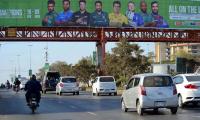Once politicians in the smaller provinces raised questions about the route shifting to Punjab, Ahsan Iqbal came up with the multiple-route theory. Now, the government maintains that the CPEC comprises a network of roads rather than one major route. It is now thought that the multiple route theory is just a cover to hide the change of route.
This allegation is further corroborated by the type of roads planned as per the details submitted by the National Highway Authority in Senate. According to those details, the eastern alignment of the CPEC – Karachi-Sukkur-Lahore – would comprise a six-lane motorway. The western alignment – Gwadar-Quetta-D I-Khan – would comprise 1-2 lane Grade-II roads. It’s obvious that six-lane motorways would be the preferred trade route as opposed to Grade-II roads of the impoverished Balochistan and KP provinces.
The multiple route theory is not the only confusion surrounding the CPEC. Contradictory statements by Ahsan Iqbal are raising further suspicions. On May 17, Ahsan Iqbal was quoted as saying that the Orange Line Train Project for [Lahore] Punjab was “not part of the CPEC but the government of Punjab would finance the project.”
This is an obvious misstatement by the honourable federal minister. In fact, MOU number 27 signed by Pakistan and China during the visit of the Chinese president is about the Orange Line project. It reads: “Agreement on financing for Lahore Orange Line Metro Train project.” This clearly means that Ahsan Iqbal wants everyone to believe that the Orange Line project is not a part of the CPEC. In reality, though, it is being financed from the $46 billion funds of the CPEC.
Special Economic Zones (SEZ) proposed under the CPEC would be extremely useful in increasing economic activity in Pakistan and also in reducing employment. The districts where these SEZs are established would also experience a massive increase in standards of living. Rationality dictates that the impoverished provinces of Pakistan should be prioritised for establishment of these SEZs.
Surprisingly, the federal government maintains that they have not yet decided the location of the proposed SEZs. This further fuels suspicion within the smaller provinces that the majority of SEZs might be shifted to Punjab and Sindh. If the proposed SEZ were to be equitably distributed, the federal government would have wasted no time in releasing the details to take credit. The silence of the government on the location of the SEZs is yet another reason that contributes to the controversy on the CPEC.
Article 37-A of the constitution of Pakistan states that, “[It is duty of the state to] promote, with special care, the educational and economic interests of backward classes or areas.” This means that the economic interests of backward areas such as Balochistan and KP need to be prioritised when it comes to mega projects like the CPEC. Given the economic plight of Pakistan, the CPEC is our only hope for now to bring about rapid economic prosperity in Pakistan. Ignoring the under-developed areas of Pakistan would be a gross violation of the constitution of Pakistan.
The CPEC is being dubbed as the next Kalabagh Dam by certain quarters, a totally mistaken idea. The Kalabagh Dam reportedly affected the interests of three provinces, which is why it resulted in fierce opposition. On the other hand, the CPEC is a beneficial project for all of Pakistan and undoubtedly a game-changer for the region. However, the dubious role of the federal government and its failure to equitably distribute the fruits of the CPEC are the only two reasons that can possibly hold the CPEC back.
The federal government in general and the honourable Ahsan Iqbal in particular need to realise that this is not the 1950s when One Unit was forced on the smaller provinces without any opposition. This is the year 2015; ground realities have changed and the federal outlook of the country has relatively improved. Any move that violates the constitutional rights of smaller provinces will be vehemently contested.
Playing the anti-Pakistan card to suppress the opposition will do no good to the country. The only way out is to bring transparency in all matters relating to the CPEC and address all the concerns of Balochistan and Khyber Pakhtunkhwa.
The writer is a freelance columnist and the editor of The Balochistan Point, Balochistan’s only English-language online newspaper.
Email: Adnan.Aamir@Live.com
Twitter: @iAdnanAamir
President Trump hints at possibility of imposing tariffs on EU and reciprocal tariffs on many countries
This change eliminated outdated civil service structure, replacing it with results-based governance model
Pakistan’s learning poverty rate stands at 77%, positioning it among the most challenged educational systems worldwide
Political observers believe PTI was pinning hopes on Trump for any possible relief for Imran Khan
Despite billions of dollars and a plethora of projects over the decades, the results remain underwhelming
Globally, there is an increasing focus on creating gender-balanced societies to address women’s status issues







